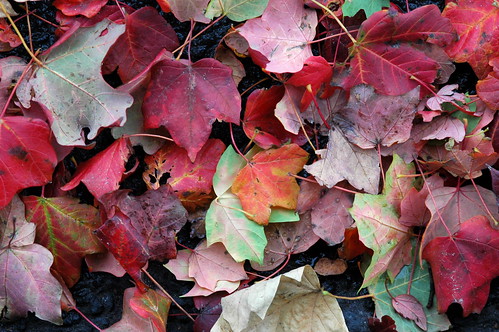Jason Sandford
Jason Sandford is a reporter, writer, blogger and photographer interested in all things Asheville.

Ok, the fall color predictions are already starting, and it’s not even September. On the radio, I heard the weather sooth-sayers saying that the drought means that lots of leaves are already falling. It was the “Conversations” show on WCQS, and the weather geeks were saying tourists better get their butts to WNC quick, before the leaves are gone.
It’s clear that fall will come early this year due to the drought. I can see trees all over that are turning color or losing their leaves.
The media will start picking up fall color reports like this soon:
Newswise — If there’s a silver lining to be found in the lack of rain clouds during an extended period of dry weather across the mountains of Western North Carolina this spring and summer, it may come in the form of above-average leaf color this fall.
That’s the word from Katherine Mathews, Western Carolina University’s fearless fall foliage forecaster and an assistant professor of biology specializing in plant systematics. Typically, drier weather during the spring and early summer results in a colorful fall leaf season beginning in October, said Mathews.
“This should be a pretty good year for leaf color change,” she said. “Although there was enough rainfall this spring to keep the trees healthy, we are still in drought conditions in the western part of the state, which, surprisingly, is good for fall color. Fortunately, the summer temperatures have not been as consistently hot as we had last year, so we should not experience the early leaf drop we had last fall. It all adds up to a nice, long progression of fall color.”
Historically, below-average rainfall during the spring and early summer means plant growth is stunted by a lack of sufficient water, Mathews said.
The final factor in the equation is climate during the first weeks of autumn, she said. “If the temperatures in September and October cooperate and cool down, contributing to the breakdown of chlorophyll, we should expect to see some brilliant fall colors this year,” Mathews said.
Chlorophyll is the chemical that gives leaves their green color in spring and summer. As chlorophyll breaks down, yellow pigments – always present in the leaves, but masked by the green of chlorophyll – are revealed, and new red pigments are produced.
Mathews also said leaf-lookers should not worry about any negative impact on fall color from the emergence of periodic cicadas in some spots across the mountains earlier this year.




















